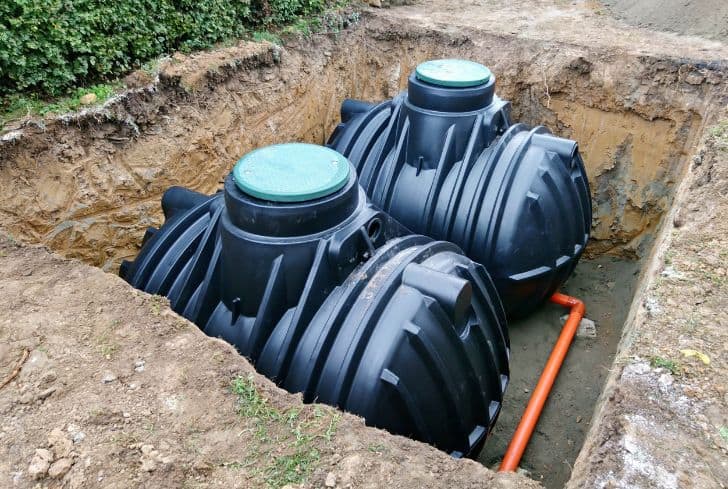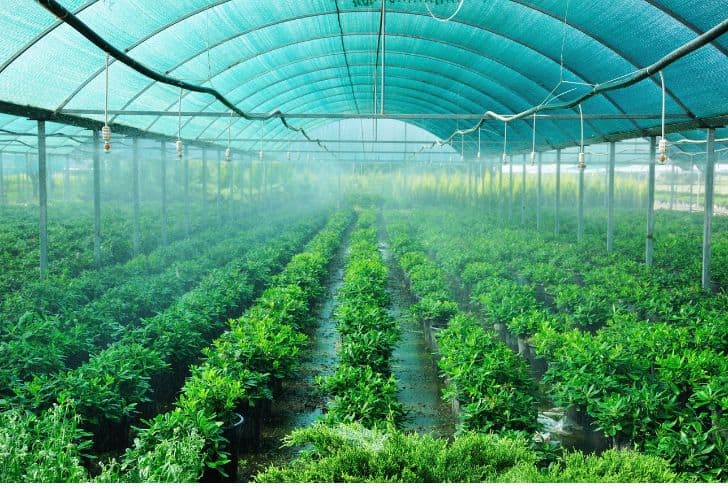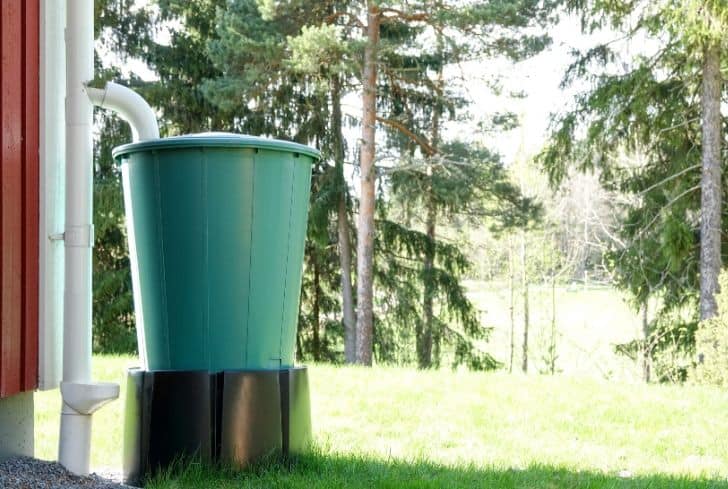Although nearly three-fourths of our planet is made of water, not all is suitable for use. The water in the oceans and seas cannot be used for drinking, and only a little of it can be utilized for other purposes. As a result, there is a constant water shortage for drinking or home and industrial use.
Areas on the planet that have long faced water shortages were able to combat this problem by harvesting rainwater. This slowly started spreading to areas where there was plenty of rainfall. As a result, the modern-day rainwater harvesting system was brought into place.
The idea behind the process is simple. Rainwater is collected when it falls on the earth, stored, and utilized at a later point.
It can be purified and converted into drinking water, used for daily applications, or utilized in large-scale industries. In short, rainwater harvesting is a process or technique of collecting, filtering, storing, and using rainwater for irrigation and various other purposes.
To reduce the consumption of groundwater, many people around the world are using rainwater harvesting systems. This practice has been around for thousands of years and has been growing rapidly. In areas with excess rainfall, the surplus rainwater can be used to recharge groundwater through artificial recharge techniques.
Today, rainwater is used as a primary source of drinking water in several rural areas. The best thing about it is that it is free from pollutants, salts, minerals, and other natural and man-made contaminants.
In an urban setting, harvesting is usually done with the help of some infrastructure, or the simplest method for a rainwater harvesting system is storage tanks. In this, a catchment area for the water is directly linked to cisterns, tanks, and reservoirs. Water can be stored here until needed or used daily.
The roofs of our homes are the best catchment areas, provided they are large enough to harvest daily water needs. Other than that, large bowls and tarps can also fulfill the function.
10 Rainwater Harvesting (RWH) Techniques
Some of the common RWH techniques include:
1. Surface Runoff Harvesting
This involves diverting rainwater from roads, pavements, and open areas into storage structures such as ponds or tanks, recharging groundwater, and preventing runoff wastage.
2. Roof-top Rainwater Harvesting (RRH)
Roof-top rainwater harvesting involves diverting and recharging (or) storing part of the rainwater that falls on the roof of a house. The harvested water is directly stored in storage tanks for later use for domestic or irrigation purposes.
3. Dams
Dams are barriers that are designed to trap water. Rainwater can accumulate directly in them, or drainage systems can be created to direct water into them. This technique is mostly used for irrigation or treated and then distributed for domestic use.
How they are modeled can also be used to harvest a lot of water. Unlike ponds, measures are applied to reduce the amount of water draining into the ground.
4. Underground Tanks

These are constructed by digging into the ground and creating a space that is then cemented to reduce water infiltration. The top is also sealed, and water is obtained through pipes directed into the tank. Pumps are used to get water out.
Underground tanks are wonderful for harvesting rainwater because since they are located underground where sunlight does not really penetrate, the rate of evaporation is reduced.
5. Rain Saucer
In this technique, rainwater is directly collected using a rain-saucer as it falls from the sky. Rain saucers look like upside-down umbrellas or big funnels and are usually attached to a pipe so that the collected water is directed elsewhere. The collecting container is sometimes placed underground with only the rain-saucer above the ground. It is a simple yet effective method.
6. Water Collection Reservoirs
In this case, rainwater is harvested from roads and pavements. Water collected through this method is not really clean and may be contaminated. However, it can still be used for crop irrigation.
7. Barrage
A barrage is a dam with several openings that can be closed or opened to control the quantity of water that passes through it. It is usually large and can collect a lot of water.
8. Slopes
Rainwater is collected at the bottom of slopes when it flows on the ground. This is a simple and natural way to harvest rainwater.
9. Trenches
This is another traditional method to harvest rainwater for irrigation that is still used today. When it rains, the water is directed to the farm using trenches.
10. Rain Barrels
These are specifically designed for this purpose and can be purchased from retail stores. Rain barrels are used for harvesting rainwater that falls on roof tops.
Uses of Rainwater Harvesting System

- Drinking
- Cooking
- Washing vegetables
- Agricultural purposes
- Toilets (Bathing and Flushing Toilets)
- Gardens, House plants, and Outdoor plants
- Lawns
- Water for pets, wildlife, livestock
- Pools and other water bodies
- Washing vehicles and equipment
- Fire protection
- Composting
Advantages of Rainwater Harvesting
Of course, there are lots of advantages that come with harvesting rainwater. Some of them include:
1. Easy to Maintain
Utilizing the rainwater harvesting system provides certain advantages to the community. First, it allows us to utilize an energy resource better. It is essential to do so since drinking water is not easily renewable and helps reduce wastage. Systems for the collection of rainwater are based on simple technology.
The overall cost of their installation and operation is much less than that of water purifying or pumping systems. Plus, maintenance requires little time and energy. The result is the collection of water that can be used substantially, even without purification.
2. Independent Water Supply
Rainwater harvesting provides an independent water supply where clean water is costly or difficult. Rainwater harvesting is a critical source of clean water and increases the quantity of potable drinking water available.
In developed countries, rainwater is often harvested as a supplemental water source rather than the main source. Still, the harvesting of rainwater can also decrease overall usage levels.
3. Reducing Water Bills
Water collected in the rainwater harvesting system can also be used for several non-drinking functions. For many families and small businesses, this leads to a large reduction in their utility bills.
On an industrial scale, harvesting rainwater can provide the needed water for many operations to occur smoothly without depleting nearby water sources.
It also lessens the burden of soil erosion in several areas, allowing the land to thrive again. In fact, it can also be stored in cisterns for use during times when water supplies are at an all-time low.
4. Suitable for Irrigation

There is little requirement for building new infrastructure for the rainwater harvesting system. Most rooftops act as a workable catchment area, which can be linked to the harvesting system. This also lessens the impact on the environment by reducing the use of fuel-based machines.
Rainwater is free from many chemicals in groundwater, making it suitable for irrigation and watering gardens.
Moreover, storing large reservoirs of harvested water is a great idea for areas where forest fires and bushfires are common during summer.
5. Reduces Demand on Ground Water
With an increase in population, the demand for water is also continuously increasing. The result is that many residential colonies and industries are extracting groundwater to fulfill their daily demands. This has led to the depletion of groundwater which has gone to a significantly low level in some areas where there is huge water scarcity.
Rainwater harvesting enables groundwater levels to be further sustained rather than depleted.
6. Supplemental in Drought
Many countries, especially those with arid environments, use rainwater harvesting as a cheap and reliable source of clean water. When drought occurs, rainwater harvested in the past months can be used.
In arid environments, ridges of soil are constructed to trap and prevent rainwater from running down hills and slopes and enhance irrigation. Even in low rainfall, enough water is collected for crops to grow.
Water can be collected from roofs & dams and ponds can be constructed to hold large quantities of rainwater so that even on days when little to no rainfall occurs, enough water is available to irrigate crops.
7. Reduces Floods and Soil Erosion
During the rainy season, rainwater is collected in large storage tanks, which also helps reduce floods in some low-lying areas. It also helps reduce soil erosion and surface water contamination with pesticides and fertilizers from rainwater run-off, which results in cleaner lakes and ponds.
8. Rainwater for Drinking Purposes
Rainwater keeps the environment green and conducive to live in. Rainwater is also independent of salinity or pollutants found in groundwater. If the rainwater is properly harvested with the right sized system and equipment, it can be used for drinking.
9. Several Non-drinking Purposes
Rainwater, when collected, can be used for several non-drinking functions, including cooking, bathing, flushing toilets, washing clothes and utensils, watering the garden, washing cars, etc. It is unnecessary to use pure drinking water if all we need to use it for some other purpose rather than drinking.
It can also be used for farming and in industries that require large amounts of water for production processes.
Disadvantages of Rainwater Harvesting
Of course, rainwater harvesting doesn’t come without drawbacks. Here are some of them:
1. Unpredictable Rainfall
Rainfall is hard to predict, and sometimes little, or no rainfall can limit the supply of rainwater. Hence, it is not advisable to depend on rainwater alone for all your water needs in areas with limited rainfall.
Rainwater harvesting is suitable in those areas that receive plenty of rainfall. If rain is unpredictable, using a rainwater harvesting system can be critical to capturing the rain when it does fall.
2. Initial High Cost
Depending on the system’s size and technology level, a rainwater harvesting system may cost anywhere between $200 and $2000, and its benefit cannot be derived until it is ready for use.
Like solar panels, the cost can be recovered in 10-15 years, which again depends on the amount of rainfall and sophistication of the system.
3. Regular Maintenance
Rainwater harvesting systems require regular maintenance as they may become prone to rodents, mosquitoes, algae growth, insects, and lizards. They can become breeding grounds for many animals if they are improperly maintained.
4. Certain Roof Types may Seep Chemicals or Animal Droppings
Certain types of roofs may seep chemicals, insects, dirt, or animal droppings that can harm plants if it is used for watering the plants.
5. Storage Limits
The collection and storage facilities may also impose some restrictions as to how much rainwater you can harvest. During the heavy downpour, the collection systems may not be able to hold all rainwater, which ends in going to drains and rivers.
Rainwater collected during the first rainy season is generally not needed by plants until the dry season, though it can be used for other household purposes. However, once the catchment is full, it cannot take advantage of future rains.
Rainwater harvesting is a system that is gaining momentum over time. Areas that experience high amounts of rainfall will benefit the most from the system and will be able to distribute water to dry lands with ease. However, the beneficial environmental impact of the system is what drives it further as of now.






